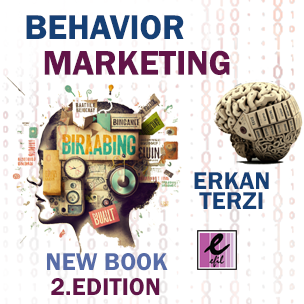Every in-depth analysis of consumer behavior repeatedly reveals a simple truth: people often make decisions not through rational processes but via irrational cognitive paths. This is precisely where cognitive biases, one of the foundational elements of marketing, come into play. A consumer’s purchasing decisions may vary depending on the product, the brand, and the marketing approach used. However, studies clearly show that these decisions can be complex and irrational from person to person.
American psychologists Daniel Kahneman and Amos Tversky began developing this topic as a scientific discipline in 1972. The duo demonstrated that people do not rely solely on logic to make decisions, but rather on mental shortcuts — or intuition. What we call “fast thinking” in everyday life actually leads to critical outcomes in marketing.
Most of our decisions are made using repetitive thought patterns — mental templates learned from past experiences. According to Kahneman, this is known as System 1 thinking: fast, automatic, emotional, and effortless. Marketing messages often operate through this system because when a consumer first encounters a product, they usually don’t conduct detailed analysis — instead, they decide intuitively.
For example, imagine you’re visiting a friend, and a fire breaks out. You survive. The next day, you participate in a survey asking about the most dangerous causes of death. Chances are, you’ll place fire at the top of your list. That’s because your personal experience becomes more dominant than statistical reality. However, in real data, fire-related deaths rank low compared to causes like poisoning, traffic accidents, and heart disease. But because you lived that experience, your mind keeps it highly accessible. This is known as the availability heuristic. The same mechanism applies in purchasing decisions — our brain structures and adapts this shortcut to our daily lives.
Another example on the marketing side comes from the UK-based insurance company Standard Life, which changed its call center closing statements to improve customer satisfaction. Instead of asking, “Is there anything else we can do for you?” they switched to, “Have we addressed everything you needed today?” This simple shift had a direct impact on how customers perceived the experience. They felt the service was more complete and positive. Because, just like with the availability heuristic, the final impression shaped the overall experience.
Brands can continuously reinforce certain messages in consumers’ minds, keeping them fresh and top-of-mind — thereby allowing perception to override reality. While this can sometimes raise ethical concerns, it remains a highly effective marketing tool when used correctly:
- Claims like “best-selling product” or “90% customer satisfaction” steer consumer perception toward social proof.
- Frequent news coverage of plane crashes increases fear of flying, despite statistics showing it’s one of the safest forms of travel.
- Even just 3–4 positive comments on YouTube can create the impression that thousands are happily using the product.
Behavioral marketing is not just about understanding how consumers think — it’s about knowing how to connect with that way of thinking. Cognitive biases act like keys that unlock mental doors for marketers. But those keys must be used ethically and strategically. The goal is not to manipulate people’s fears or emotions, but to understand their decision-making mechanisms and offer real, sustainable solutions.


